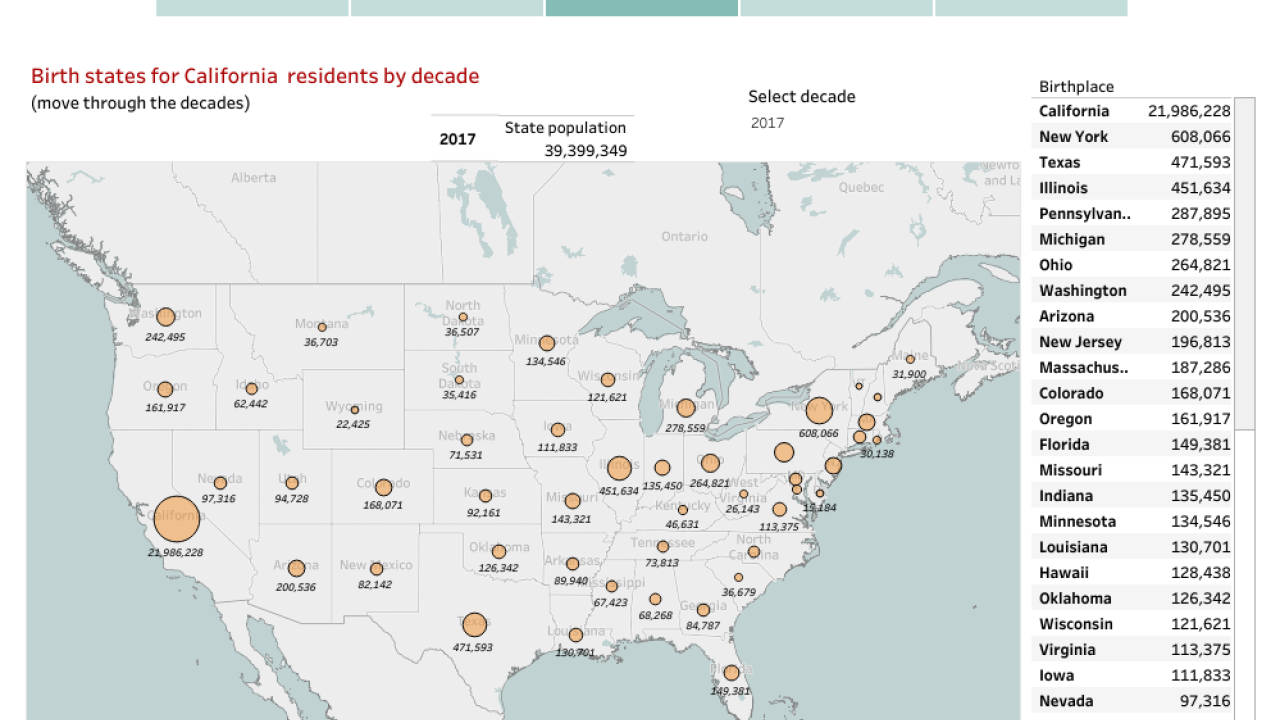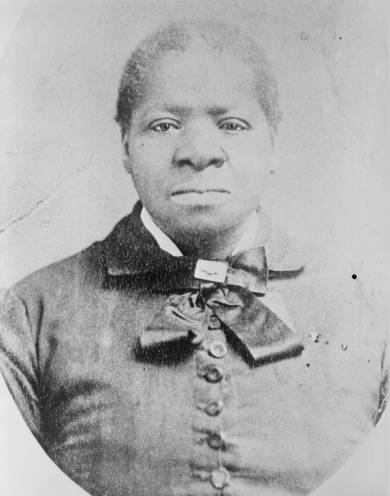
How a Historical Database Can Encourage Student Inquiry
University of Washington's America's Great Migrations Project Offers Data that Promotes Student Inquiry
Recently I was preparing for a grade group session on immigration and migration to California and I came across a collection of data that I wish I had known about earlier. Perhaps you have yet to see this too, so in the interest of sharing a promising teaching tool I will explain how I think it can be useful for students at all grade levels. What I love about this website from the University of Washington is that it mines U.S. Census data to cover California’s shifting demographics from the beginning of statehood through 2017. Students can scroll through decade by decade - either to see the population as a whole, or by racial group - and look for new developments as well as patterns in the data. Such a birds-eye view can provide students with some key insights about the state - such as its rapid growth due to the constant arrival of people from other states and countries bringing new knowledge and ideas, cultures, foods, faiths and more. These demographic realities can help students put other features of the state in context, including its history of innovation, its multicultural society, its racial and ethnic strife, and its land use and environmental regulations. Equally as important, I think working with this information encourages the sort of inquiry-driven instruction that engages students. There is no limit to the great questions that students may generate when given a tool like this, questions that can lead to meaningful investigations of the past.
This data can be used in many different ways; below I suggest three brief case studies centered on data from specific time periods, all with a focus on African-Americans in California.
African-American experiences in the Gold Rush
Data from the “Birthplace of California residents” for 1850 and 1860 for the population as a whole provides insight into the geographic pull of the Gold Rush and what that meant for California’s rapidly-evolving society. Students could explore which nationalities were most represented at the beginning and end of the era, and what this might have meant about relative power balances or cultural influence. Students could then drill down into a particular racial category to generate new questions for investigation. I used the “select race” to focus on Black Californians in 1850. After seeing that the vast majority of Black Californians were born in southern states I wondered what their lives were like at a time when slavery was still legal according to the U.S. Constitution, but not allowed in California’s new state constitution. Though we cannot know the specific circumstances of each person, it is likely that those born in the South were still legally enslaved – often by the people who forced their migration to California to mine for gold.

Classroom-generated questions can prompt research to identify stories about individual Californians that will bring this data alive. This article from the ACLU provides insight into the lives of three African Americans from Mississippi - Carter Perkins, Robert Perkins, and Sandy Jones - who were caught somewhere in between the status of free and enslaved and used the opportunity to build a business of their own. We see in this data that there were also around one hundred African-Americans born in Massachusetts, a free state in 1850. This made me wonder what sort of reception they received among the international crew of argonauts in the new state. Did these Massachusetts-born residents enjoy different day-to-day opportunities than their fellow African Americans from the South because of their legal free status? And, did they use this status to help support the rights and opportunities of other Blacks in the state? What role did they and other Californians play in resisting the Fugitive Slave Act, which made it legal for slaveowners to reclaim ownership of a person even in a free state? This PBS article on Stephen Spencer Hill, a miner and farmer whose neighbors helped him escape re-enslavement, explains one such scenario. A better known story is that of Biddy Mason, who in 1856 used the California courts to secure her freedom, also with the support of fellow Californians.
The Second Great Migration, by the Numbers and by the People
I find that comparing at least two decades provides the greatest historical insight by allowing us to see change over time. Knowing that WWII drew many tens of thousands of African Americans out of the South to California as part of the Second Great Migration, I looked at data from 1940 and 1950 to compare how many African Americans resided in California before and after the war, and where they hailed from.
I was struck by the fact that while in 1940 the majority of Black residents in California were born here, by 1950 more Black Californians had been born in Texas. I can imagine students wondering what would draw so many migrants to California, and, what pushed them out of Texas (and Louisiana) in such large numbers? High school students could likely make the connections between these arrivals and the defense industry jobs, or the deep prejudice and legal discrimination embedded in the South in this era. Classroom investigations could be designed around individuals who were part of this migration, and the ways they and their descendants later shaped the state, including in the quest for advancing civil rights.

Elementary students learning about migration history could think about push and pull factors while reading this book on Alvin Ailey, who as a teenager moved with his mother from Navasota, Texas to Los Angeles in 1945. His mother was in search of better work opportunities for herself and a better life for Alvin. It was in Los Angeles that Alvin Ailey was first introduced to modern dance. Ailey went on to establish the Alvin Ailey American Dance Theater – one of the first racially-integrated American dance companies that earned international acclaim. Ailey’s story gives students the opportunity to think about the cultural influence of migrants and immigrants in a given place, and of course, the influence of that place on the newcomer.
Alvin Ailey is just one of millions of people whose life can bring alive the contours of our state’s, and our nation’s, history. Kamala Harris is of course another such person. This elementary-level book, Kamala Harris: Rooted In Justice, provides students with insight into her family’s connections to immigration, and how they helped move forward civil rights. Harris speaks with pride about her international family, and the great gift this has been for her: “When I was a young girl visiting my grandparents in India,” Harris said, “I’d join my grandfather and his buddies on their morning walk along the beach as they would talk about the importance of fighting for democracy and civil rights. Those walks made me who I am today…” This book was published before Harris was nominated and elected as Vice President, and students can watch for how she continues to speak to the importance of securing justice for all.
Contemporary Migration and Immigration and its Influence on California
This website can also be used to consider contemporary California. A look at Black Californians’ birthplace in 2017 is striking for the fact that the second largest place of birth beyond California is the continent of Africa. Students may wonder how this came to be the case. High school students can trace the influence of the Civil Rights Movement on changing immigration policy. It is no coincidence that a year after the Civil Rights Act, Congress passed the 1965 Immigration and Naturalization Act to remove discriminatory barriers that had long favored Northern and Western European immigrants. In keeping with his broader civil rights agenda, President Johnson called for such a policy during his 1964 State of the Union Address. Johnson highlighted the injustice of discrimination in its multiple forms: “Today, Americans of all races stand side by side in Berlin and in Viet Nam. They died side by side in Korea. Surely they can work and eat and travel side by side in their own country.” In the very next sentence Johnson went on to say: “We must also lift by legislation the bars of discrimination against those who seek entry into our country, particularly those who have much needed skills and those joining their families.” If students look at the 2017 data for the state’s population as a whole, they will see that the five most common places of birth for residents after California, are all foreign countries. Only number six is a state - New York. Such numbers make clear just how important immigration policy is in shaping who resides here, and just how large of a role immigration, and migration, plays in our state’s makeup.
I believe students may find this most recent data particularly thought-provoking, as they will see themselves represented in this data. What questions might they be compelled to ask about their own family’s history, about their state, their nation, or even their world?
